Maianthemum racemosum ssp. racemosum used to be Smilacina racemosum.
It is also known as False Solomon seal or Fat Solomon.
These flowers are just past their prime on 15 May 2015. Berries are already starting to form.
"More than YOU want to know?
Maianthemum racemosum ssp. racemosum used to be Smilacina racemosum.
It is also known as False Solomon seal or Fat Solomon.
These flowers are just past their prime on 15 May 2015. Berries are already starting to form.
A link page to the cumulative local plant images on this website
Anisocarpus madioides
Woodland maddia
Asarum hartwegii
Hartweg’s wild ginger or Wild ginger
This species occurs only farther north and east of here but it flowers this time of year.
Cardamine californica var. integrifolia
Coast milkmaids
Calochortus species
The Mariposa lillies
There are many different species of these in California and a couple of them live near here.
Dudleya cymosa
Canyon live-forever
Eriophyllum ambiguum
Beautiful Woollysunflower
Erythronium californicum
Trout lilly or California fawn-illy
Eschscholzia californica
California poppy
Fragaria vesca
Wild strawberry
These will be flowering soon!
Genista monspessulana
French broom
Geranium molle
Dove’s-foot crane’-bill; a wild Geranium
Hypericum perforatum
Common St. Johnswort or Klamath Weed
Iris douglasiana
Coast Iris or Douglas’ Iris
Iris fernaldii
another local wild iris
Iris purdyi
another local wild iris
natural Wild Iris Hybrids are very common.
This bearded Iris is not a native Iris species
Lathyrus vestitus var. vestitus
Woodland pea
Maianthemum racemosum ssp. racemosum
False Solomon Seal
Mimulus aurantiacus
Sticky Monkey Flower
Monardella purpurea
Siskiyou monardella, serpentine monardella & Serpentine Coyote Mint
Pleuricospora fimbriolata
“fringed pine-saps”
NEEDS OWN PAGE
Polygonum californica
California milkwort
Pseudotsuga menziesii
Douglas-fir
Rhus diversiloba
Poison oak
It is still too early for flowers on this underappreciated beauty.
another image from earlier
Ribes sangineum var. glutinosa
Pink-Flowered Currant
Scoliopus bigelovii
Fetid Adder’s Tongue
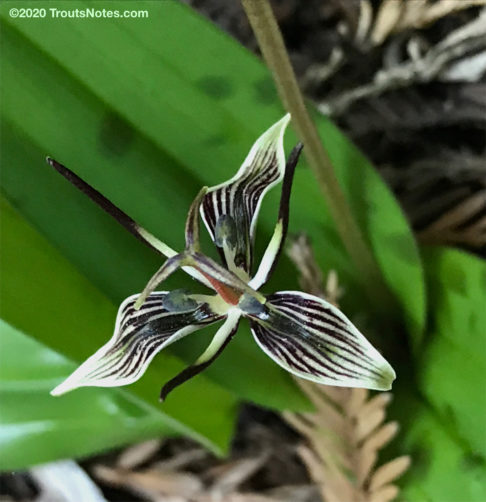
Silene laciniata ssp. californica
California Indian Pinks
Slime molds
Many
Spartium junceum
Spanish broom
Trientalis latifolia
Pacific Starflower
Trillium ovatum
Pacific Trillium
Triteleia laxa
Ithuriel’s spear
Whipplea modesta
Yerba del Selva
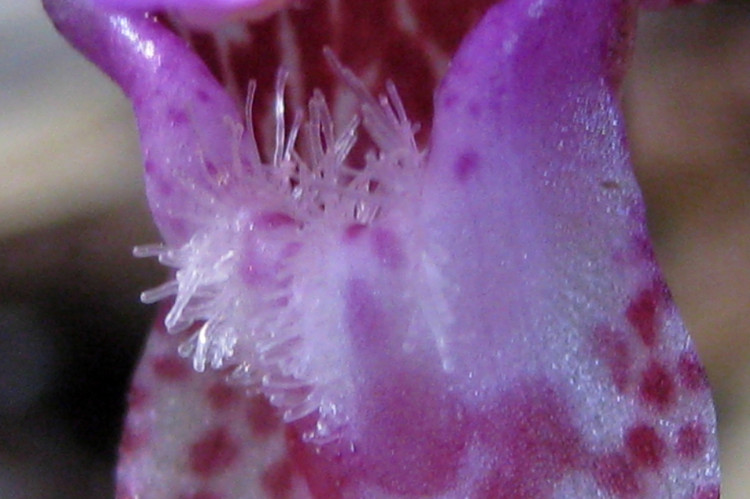
Calypso bulbosa is also known as the Calypso orchid and Fairy slippers.
Here it is the occidentalis subspecies.
It is said to be easily killed through the act of picking its flower and to be endangered in many areas of its wide range.
The appearance of these small single leaves is a sign spring is here.
The leaves don’t stay around long.
This one made fruit.
The tiny corm is said to be edible but I have to wonder why a person would.
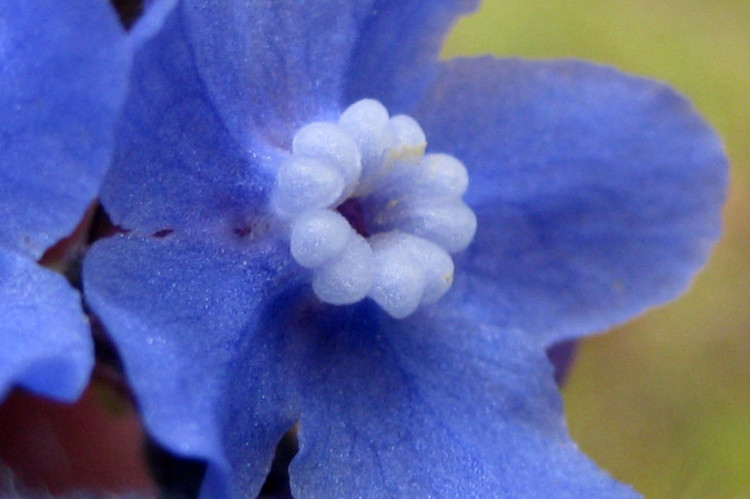
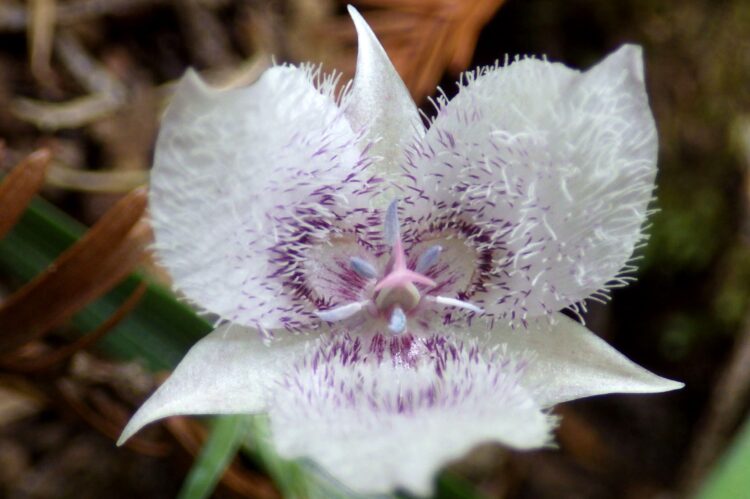
Calochortus are the Mariposa lillies.
Calochortus amabilis
Diogenes’ lantern
Is fairly common in the more open sunny areas not far from here.
Calochortus tolmiei
White pussy ears or Tolmie’s star tulip
This grows here but is easily overlooked when not in flower
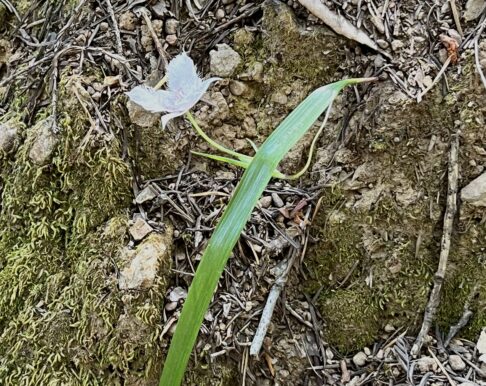
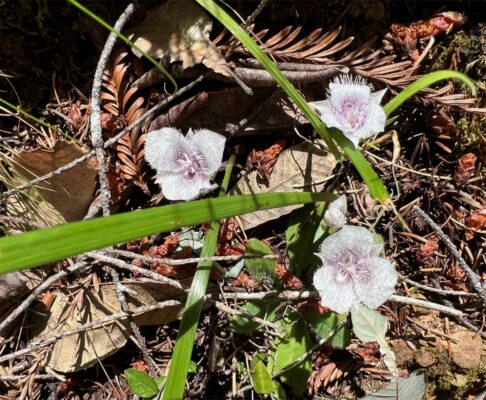
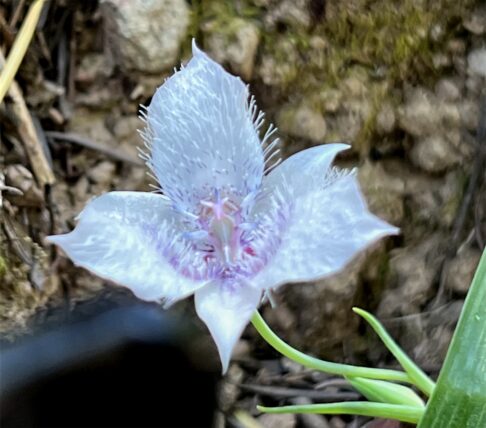
Fuligo septica; the “Dog Vomit slime mold”.
It is supposed to be edible and sometimes eaten in Mexico; said to be scrambled like eggs. It is certainly creamy inside when it is a plasmodium and surprisingly is just firm enough to pick up.
These are the drying aethelia/sporangia of that same species.
After noticing some nice and fresh Fuligo septica plasmodia had crawled onto this log last summer, I’d mixed the plasmodia of several of them together in the palm of my hand intending to take the mess to the kitchen and check them out after a round in a frying pan with some butter. The smell was really strong and disgusting so, losing my appetite, I put them down on a stump.
This is what was there hours later — they apparently did not like being mixed together as a wad in my hand. The second ‘battle’ image in this next sequence came from the LAIM site.
And the following day this hard material was all that was visible. I am guessing that material might be slime-mold sclerotia?
That was interesting and novel enough to cause me to try it again; this time using the plasmodia from just two slime molds.
As was the case the first time, I did not get a photograph of the starting point when the color was all a solid yellow.
A while later:
And still later that same afternoon:
One more time. (I yet again did not have a camera with me for the starting point so I suppose perhaps this year I should attempt this with better thoughts about documentation? I doubt any slime molds will agree so I might not bother them.)
Not nearly as impressive as the first one but still fascinating.
Trying it with just one plasmodium gave different results although produced the same sclerotia-like end material.
I decided that I had no business tormenting slime molds or at least causing them to do something with their lives other than being productive as slime molds.
All of that did however give me some insight into the nature of some other oddities I had seen as also being asssociated with slime molds. As a result of that I now believe that both of these things may be sclerotia generated from Fuligo septica plasmodia during summertime? Notice there are two irregular flattish dark-red things towards the center and right back and at least five clumps of a raised and rounded brownishness towards the center and front?
Purportedly if a person wants to raise slime molds, or keep them around as “pets”, the sclerotia is said to be a more reliable starting point than spores.
These are the same species, Lycogala epidendrum AKA Wolf’s Milk Slime, sporulating on another log. These just crawled up to the surface within the last few days (May 2015).
They started turning brown today.
I decided to look inside of one.
I believe that they are Wolf’s milk slime mold (Lycogala epidendrum).
This is how they ripen:
Same species; different log.
